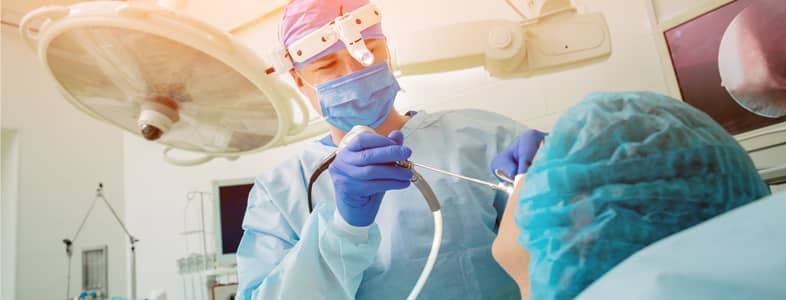
Calvarial Bone Graft Procedure
A calvarial bone graft is an older procedure in which a portion of the outer skull helps rebuild the nose. This particular procedure has fallen out of favor because the graft may calcify, warp, or dissolve altogether over time. Although some of these issues may arise with the more popular rib or auricular (ear) cartilage used nowadays, it is much less frequent than a calvarial bone graft.
Revision Procedure
A revision rhinoplasty procedure to correct a calvarial bone graft that may have calcified, warped, or dissolved can be very tricky. In cases where the initial graft was done decades before, it may be challenging (if not impossible) to remove the graft, particularly if it has calcified into the surrounding tissue. If the original graft cannot be removed, it may have to be sanded down. A new graft from auricular or rib cartilage can then be placed over the calvarial graft to better shore up the nose.
This revision rhinoplasty is usually done under general anesthesia. It is difficult to estimate the amount of time necessary for the procedure, as each case is different, and Dr. Marin may not know how extensive the work will need to be until he gets a good look at the original graft.
Risks, Side Effects, and Recovery
The most significant risks from this sort of revision rhinoplasty, as with any major surgery, are excessive bleeding and infection. Stopping alcohol use, tobacco products, and any blood-thinning medications two weeks before the surgery until at least two weeks afterward will reduce the risk of excessive bleeding. Taking antibiotics as prescribed will cut down on the risk of infection.
The most common side effects will be bruising and swelling of the nose. Ice, cold compresses, and taking the herb Arnica montana will cut down on bruising and swelling.
Patients can generally resume normal activities such as driving within two to three weeks after surgery. However, more strenuous activities such as exercise should probably wait until four weeks after the procedure.
Final Appearance
It may take anywhere from one to two months for the nose to settle into its final shape. This is particularly important for patients undergoing revision surgery, as they may be anxious about their appearance after surgery. Dr. Marin has extensive training and experience working with unsatisfied patients with their initial cosmetic surgery experience and wants to correct the initial procedure.
Contact Marin Aesthetics to schedule a rhinoplasty consultation.
*The content in this blog is developed to spread the awareness towards plastic surgery. Our blog is not intended to serve as a replacement for an actual in-office consultation with Dr. Marin. As such, the information within this blog reflects the unique cases of our individual patients.
Comments are closed here.